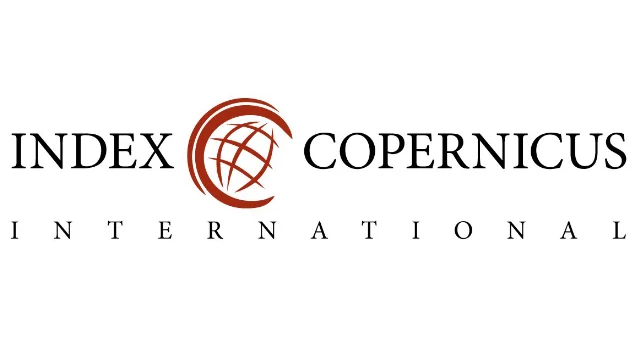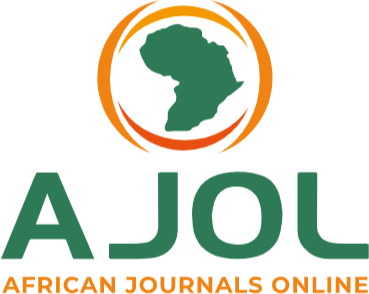Application of Green Computing at Nigerian Tertiary Institutions
Keywords:
Green computing, climatic change, computing devices, Nigerian tertiaryAbstract
Nnaemeka Emeka Ogbene, Hyacinth Chibueze Inyiama, Frank Ekene Ozioko, Nnamdi Johnson Ezeora, Agbo Chibuike George and Asogwa Tochukwu Chijindu
Green computing (also called green technology) is the use of computers and other computing devices/equipment in energy-
efficient and eco-friendly ways to conserve energy and reduce climatic change to its barest minimum. The frequent use of various
computing devices such as desktop computers, mainframe computers, data centres, and other electronic gadgets at tertiary institutions by a very large number of both staff and students result in energy being dissipated at regular intervals which may lead to climatic change and global warming that are hazardous to human health. Warmer temperatures over time
can change weather patterns and disrupt the usual balance of nature thereby posing many health risks to human beings and all other forms of life on earth. In this work, object-oriented analysis and design technology (OOADM) and unified modelling language (UML) tools were employed to develop a template for the application of green computing at Nigerian tertiary institutions. The two UML tools used: use-case and activity diagrams, show the various actors involved in the usage of green computing at tertiary institutions and the sequential steps required by each of the actors in using the green computing in his/her domain, respectively. The template well adopted by all the tertiary institutions and other establishments in Nigeria will help to conserve energy and reduce climatic change drastically, thereby creating a healthy environment.
Downloads
Published
Issue
Section
Similar Articles
- Efe Kelvin Jessa, The Role of Advanced Diagnostic Tools in Historic Building Conservation , Communication In Physical Sciences: Vol. 9 No. 4 (2023): VOLUME 9 ISSUE 4
- Edikan E. Akpanibah, Optimization of investment strategies for a Defined Contribution (DC) plan member with Couple Risky Assets, Tax and Proportional Administrative Fee , Communication In Physical Sciences: Vol. 7 No. 1 (2021): VOLUME 7 ISSUE 1
- Irene Edem Johncross, Fanifosi Seyi Josiah, Abidemi Obatoyinbo Ajayi, Resource recovery from Sugar Cane Biomass for the Synthesis of Silicon Nanoparticles , Communication In Physical Sciences: Vol. 12 No. 1 (2024): VOLUME 12 ISSUE 1
- Kabiru Alhaji Bala, Ogunlana Yusuf Olayinka, Maryam Aliyu, The Design and Development of Environmentally Friendly Biogas Using an Anaerobic Digestion System , Communication In Physical Sciences: Vol. 8 No. 4 (2022): VOLUME 8 ISSUE 4
- Kingsley Uchendu, Chinaegbomkpa Umezurike, David, Friday Adiele, Position Analysis of the Relationship Between the Naira Exchange Rate, Gb Pounds, Euro and US-Dollars , Communication In Physical Sciences: Vol. 8 No. 4 (2022): VOLUME 8 ISSUE 4
- Funmilayo Ayedun, Probing the Effects of Atomic Position Changes on the Structural, Electronic, and Thermoelectric Properties of the Half-Heusler ZrPtPb Compound: A First-Principles Study , Communication In Physical Sciences: Vol. 12 No. 3 (2025): VOLUME 12 ISSUE 3
- Benjamin Asuquo Effiong, Emmanuel Wilfred Okereke, Chukwuemeka Onwuzuruike Omekara, Chigozie Kelechi Acha, Emmanuel Alphonsus Akpan, A New Family of Smooth Transition Autoregressive (STAR) Models: Properties and Application of its Symmetric Version to Exchange Rates , Communication In Physical Sciences: Vol. 9 No. 3 (2023): VOLUME 9 ISSUE 3
- M. Runde, Validation of Perception of Some Nigerians on the Origin and Use of Phyto-remedies in Management of Covid 19; An Overview of Social Media Respondents , Communication In Physical Sciences: Vol. 6 No. 1 (2020): VOLUME 6 ISSUE 1
- S. Takuma, Assessment of changes in plasticity and mechanical properties of polystyrene fatty acid-based neem seed oil blends , Communication In Physical Sciences: Vol. 4 No. 1 (2019): VOLUME 4 ISSUE 1
You may also start an advanced similarity search for this article.




